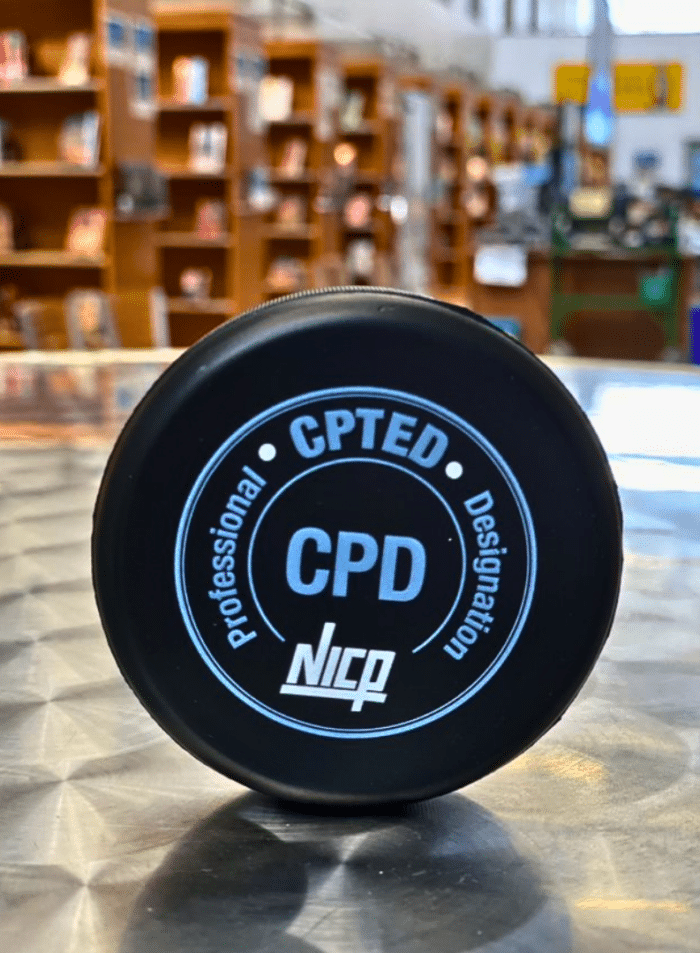Throughout the country, news reporters continuously highlight how schools are under attack from exterior and interior threats to student and staff safety. To address this threat, three-quarters of Maryland’s local education authorities (LEAs), and the Maryland Center for School Safety (MCSS) attended an 8-day training encompassing 64 hours of Crime Prevention through Environmental Design (CPTED) instruction by the National Institute of Crime Prevention (NICP).
The State agency, MCSS, funded the entire amount for this important instruction and had the training conducted here in Maryland instead of Florida, so that as many LEAs as possible could participate. The effort was coordinated by the local Towson, MD architectural firm, Crabtree, Rohrbaugh Associates and supported by the non-profit agency, Maryland Association for School Business Officials (MDASBO). The three organizations often team up to provide professional development to all the State’s educators.


The training is timely and provided practical instruction on how to successfully incorporate CPTED principles to adhere to new State legislation, which was developed to help improve safety in Maryland schools:
- December 2019— Maryland State Department of Education (MSDE) – Emergency Planning Guidelines for Local School Systems and Schools, amended to include CPTED principles.
- May 2020— Maryland State Council on Child Abuse and Neglect (SCCAN): Child Sexual Abuse Prevention, MD Code Ann., Education, § 6-113.1(e) law incorporated CPTED principles.
Attendees were from as close as Baltimore City, Baltimore County and Harford County Public Schools, to as far away as Garrett County and Worcester County Public Schools, plus the Maryland School for the Blind. LEA staff encompassed disciplines such as architects, engineers, designers, safety and security personnel and security resource officers. LEAs who completed the Basic Training at Dundalk High School in Baltimore County and the Advanced Training at the Harford County Community College, and passed the exams, received their Crime Prevention Designation (CPD).
On the heals of this training, MCSS provided an additional $3 million in capital funds for all LEAs to conduct CPTED safety and security surveys at their schools.
The concept of CPTED is a multi-faceted design process that is based upon four principles: Natural Surveillance, Natural Access Control, Territorial Reinforcement and Maintenance. CPTED is a crime prevention method that helps to decrease opportunities for inappropriate or abnormal behavior by increasing opportunities for others to see the inappropriate activity. CPTED goes beyond traditional mechanical security methods by integrating and heightening areas of natural surveillance in the built environment.
While environmental design alone will not prevent all school violence, CPTED is a prevention strategy that has led to safer schools and neighborhoods. According to the CDC, “Communities applying CPTED activities reported decreases in gun violence, youth homicide, disorderly conduct, and violent crime. Communities also reported positive impacts on residents’ stress, community pride, and physical health.”
Coordinating Agencies:
MCSS Pages – Maryland Center for School Safety Home Page
MDASBO www.ASBO.org
CRA www.cra-architects.com
Photos upon request.
More on the four CPTED Principles:
NATURAL SURVEILLANCE
Surveillance is supported by the placement of physical features, activities, and people in a way that maximizes visibility. Easily surveilled environments are created by designing landscapes that allow clear and unobstructed views of surrounding areas, improving visibility with lighting or transparent building materials, avoiding lighting that creates glare or shadows, and to avoid creating areas of entrapment or concealment. Additionally, good quality lighting that provides optimal color rendering makes a space seem more visible and provides increased witness potential.
TERRITORIAL REINFORCEMENT
Territorial reinforcement describes the physical attributes used to express ownership, such as fencing, pavement treatments, signage, and landscaping. Territorial reinforcement increases feelings of territorial behavior and a sense of ownership by both the operators of the site or facility and everyday users.
NATURAL ACCESS CONTROL
Users are physically guided through a space by the strategic design of streets, sidewalks, building entrances, and landscaping. Access control is achieved by ensuring that entrances are visible, well lit, and overlooked by windows. For example, clearly defining entryways, controlling access points to a site, highlighting the main entrance, marking public walkways and paths, and having a comprehensive wayfinding system. These methods will establish a natural access control that puts all users at ease and makes any abnormal use of a facility obvious.
MAINTENANCE
Maintenance allows for the continued use of a space for its intended purpose and may be performed on both man-made improvements and natural or planned landscaping. Maintenance serves as an additional expression of ownership, demonstrating to potential abnormal users a sense of pride of ownership and surveillance. Well performed maintenance prevents the reduction of visibility from landscaping overgrowth and or inoperative lighting.




